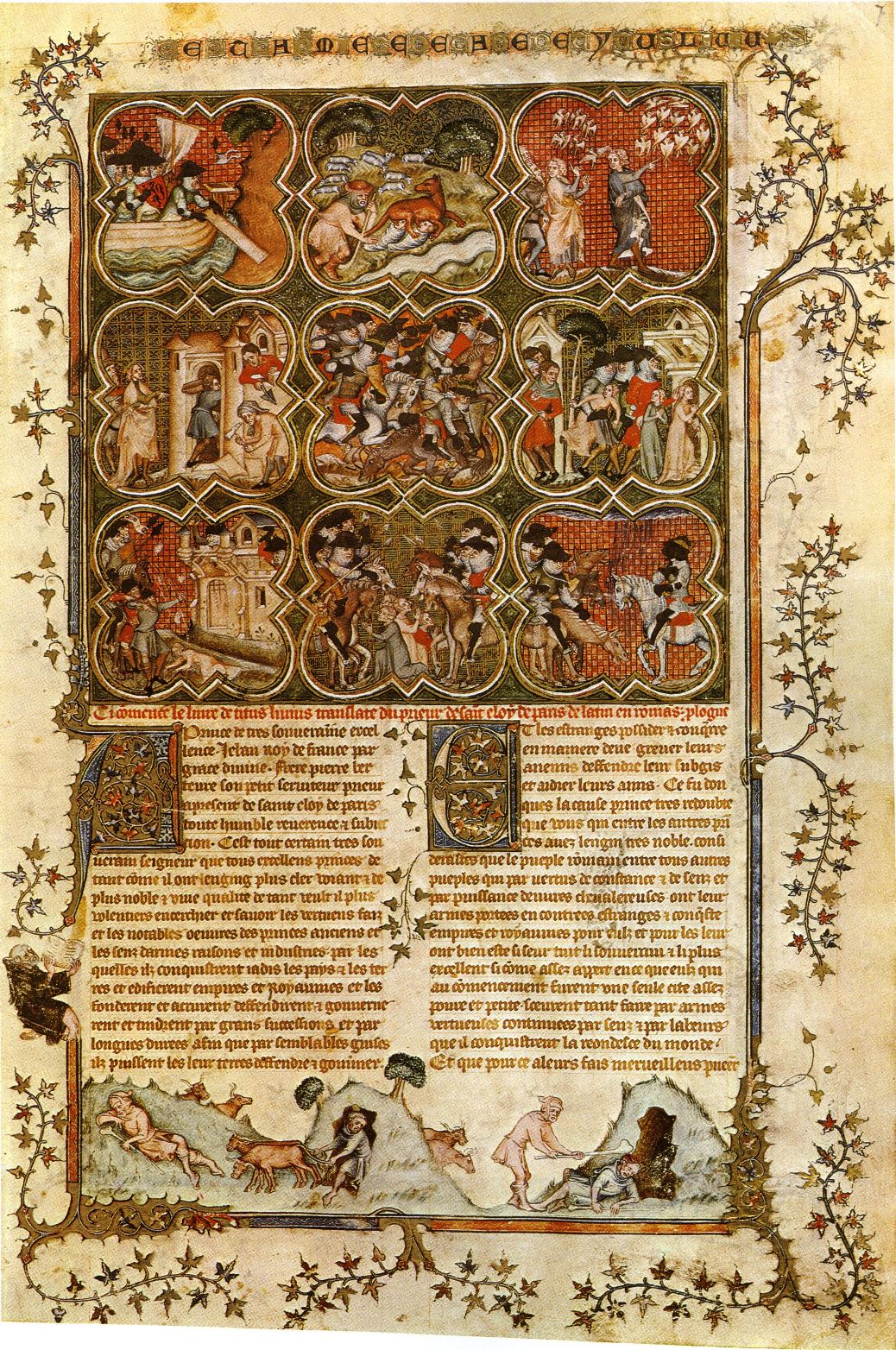
Antiquarian books — Valuable Books and Manuscripts

Pierre Bersuire, also known as Petrus Berchorius, was a French medieval writer, Benedictine monk, translator, and encyclopedist.
He was the leading French scholar of his time and friend of Petrarch, author of encyclopedic works on morality, and the first French translator of Titus Livy's History from the Foundation of the City. Very interesting for researchers is Pierre Bersuir's text Ovidius Moralisatus - written in Avignon in 1340 and spreading rapidly, it is a systematic allegorical analysis of the Metamorphoses, aimed at the current situation in church and society.
Bersuire was also an eloquent preacher and author of voluminous sermons.

Gaius Valerius Catullus, often called Catullus, was a Roman poet whose statements on love and hate are considered the best lyrical poetry of ancient Rome.
Scholars have concluded from existing sources that Catullus was a contemporary of the statesmen Cicero, Pompey, and Caesar, whom he addresses in various ways in his poems. In 25 poems he speaks of his love for a woman he calls Lesbia. In other poems Catullus speaks sarcastically or contemptuously of Julius Caesar and other politicians.
Catullus' poems have been praised by modern poets, notably Ovid and Virgil.

Coriolanus Cepio, or Coriolanus Cepico (Latin: Coriolanus Ceppico, Coriolanus Cepio) was a Venetian humanist nobleman of Croatian origin, historian, and military officer.
In Venice and Padua he studied humanities, navigation and military strategy, then worked as an official in his native Trogir. During the war of the Republic of Venice with Turkey, which lasted four years (1470-1474), Cepio participated in this expedition as commander of the Trogir galley. In Petri Mocenici imperatoris gestorium libri III (Venice, 1477) he described the military expedition and his experiences therein. Cepio describes in detail the military operations in the Levant, near the Ionian Islands, in the Peloponnesus and the Balkans, and in Asia Minor. He is especially interested in the conquest of Izmir, the attempts to set fire to the Gallipoli arsenal and the siege of Shkoder, the capture of Smyrna, the Venetian protectorate of Cyprus, and Scutari.
He covers the Venetian victories at Mochenigo very carefully. As a humanist, Cepio noticed everything that pertained to antiquity and ancient monuments. This book is one of the oldest printed works by Croatian authors.

Johannes Busch was a major Dutch clergyman and reformed theologian.
As a monastic reformer and chronicler, the Augustinian canon of Windesheim, Johannes Busch is one of the most prominent figures of the Devotio moderna ("New Piety") movement in Catholicism. With his historiographical works Chronicle of the Monastery of Windesheim and Liber de reformatione monasteriorum he shaped the association of the Windesheim monastery and the late medieval observance movement.

Ludolf of Saxony (German: Ludolf von Sachsen), also known as Ludolf der Kartäuser, was a Roman Catholic theologian and Christian writer of German origin.
The major work of his life was Vita Christi (Life of Christ), also known as Speculum vitae Christi (Mirror of the Life of Christ), completed in 1374. The book is not only a biography of Jesus, but also a history, commentaries by church fathers, and a series of dogmatic and moral reflections, spiritual teachings, meditations, and prayers. This work was very popular in the fourteenth and fifteenth centuries and was first printed in the 1470s.

Werner Rolewinck (Latin: Wernerus Rolewinkius) was a German chronicler, historian, and theologian.
Werner Rolewinck was a Cartesian monk. His best known and most important work is Fasciculus temporum, a history from the creation of the world to Pope Sixtus IV. Already during his lifetime this work was republished many times in Latin, French, Dutch, and German. Drawing on major Christian historiographical sources such as Orosius and Eusebius, Fasciculus presents the history of the world in the form of a genealogy, a traditional historiographical structure dating back to late antiquity.
Another famous work by Rolewink is a description of the manners and customs of his homeland entitled De laude veteris Saxsoniæ nunc Westphaliæ dictæ.

Hartmann Schedel was a German humanist, medical scientist, historian and chronicler.
Schedel was the first to compile a world chronicle, the so-called Visual History of the Earth from the Creation of the World to the 1490s, known as Schedelsche Weltchronik (Schedel's World Chronicle). It was published in 1493 in Nuremberg. About 600 woodcuts for this book were created by the artists and engravers Michael Wolgemuth (1434-1519) and Albrecht Dürer (1471-1528). The illustrations depict biblical scenes, family trees, portraits of famous personalities, and fairy tale or legendary creatures. However, the main ones here were maps of the world, Germany and Central Europe.
Hartmann Schedel was one of the first cartographers to use machine printing. He was also a renowned collector of books, artworks and engravings by old masters.






![[BUSCH, Johannes (1399/1400-after 1475)]](/assets/image/picture_2944660/8eb08/3af5961a08f66311d195db6df32ee3231689112800jpg__fix_374_244.jpeg)
![[BUSCH, Johannes (1399/1400-after 1475)]](https://veryimportantlot.com/assets/image/picture_2944660/8eb08/3af5961a08f66311d195db6df32ee3231689112800jpg__fix_374_244.jpeg)







